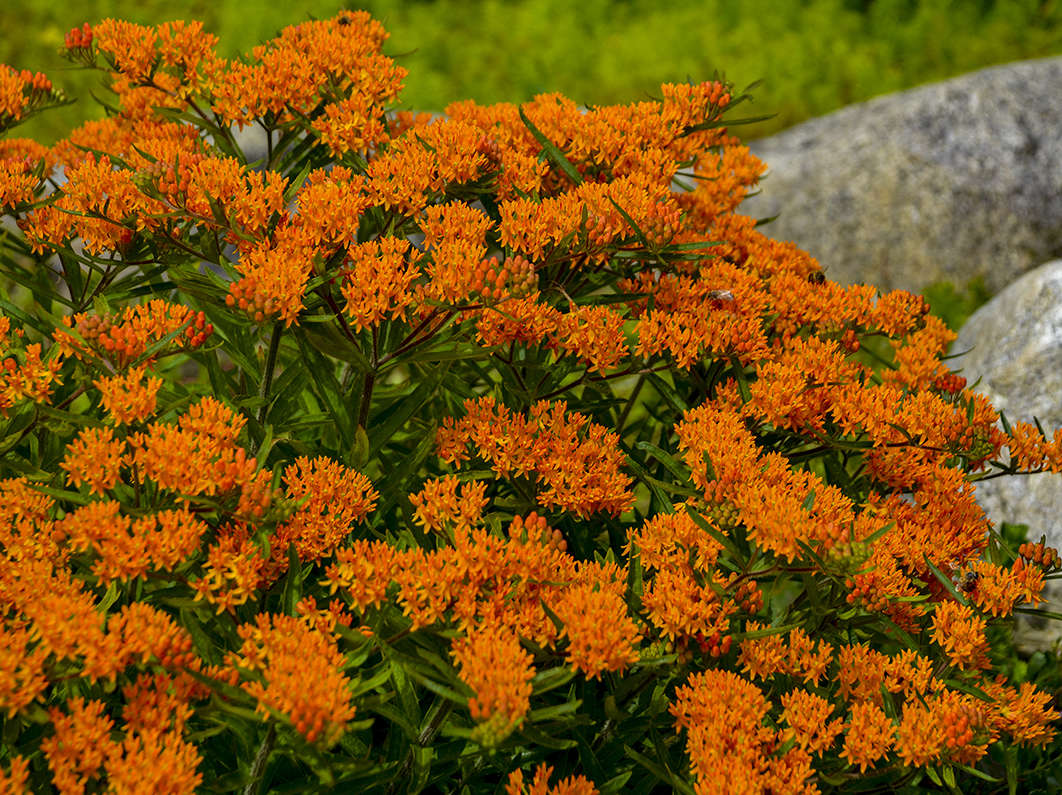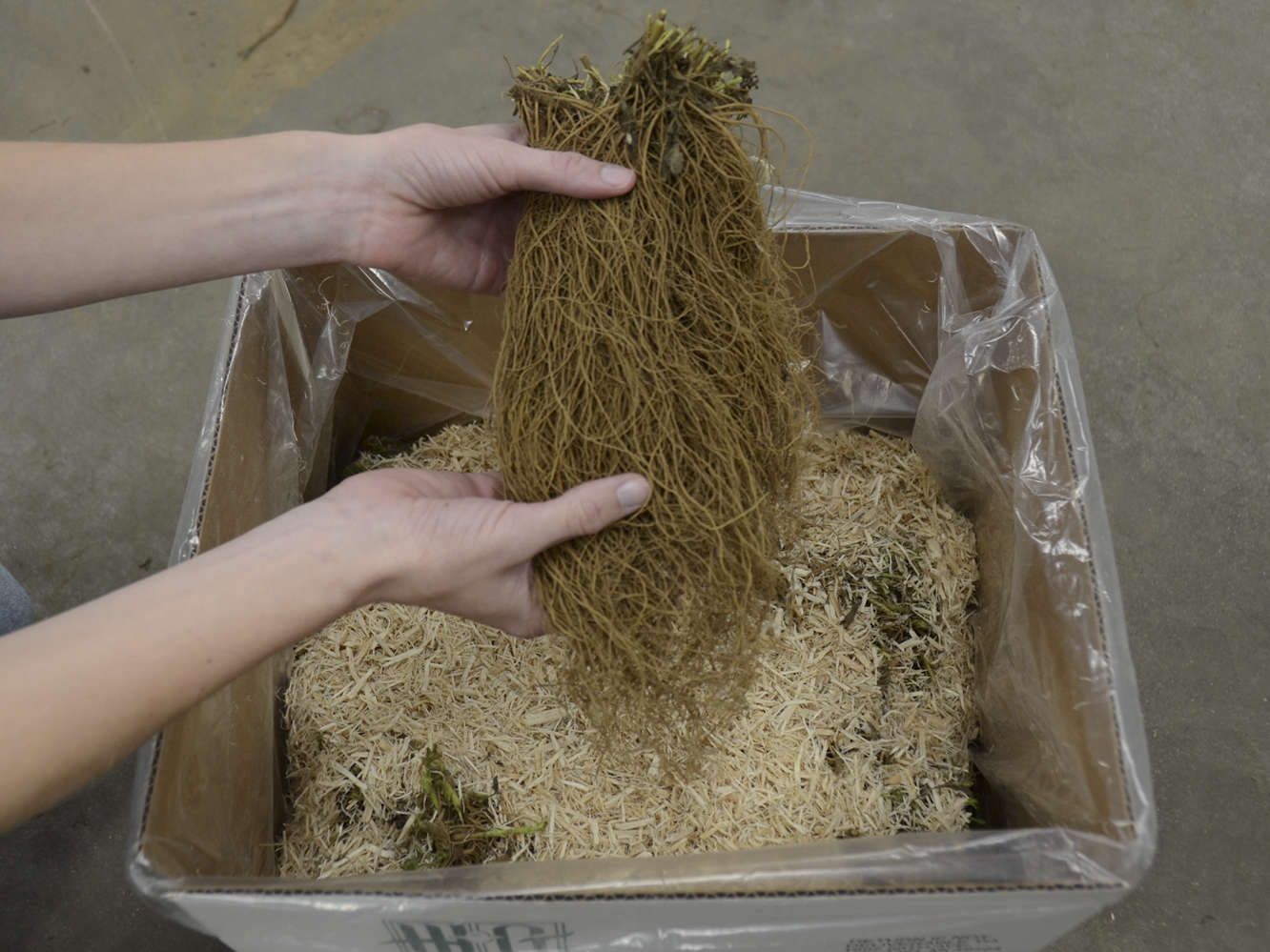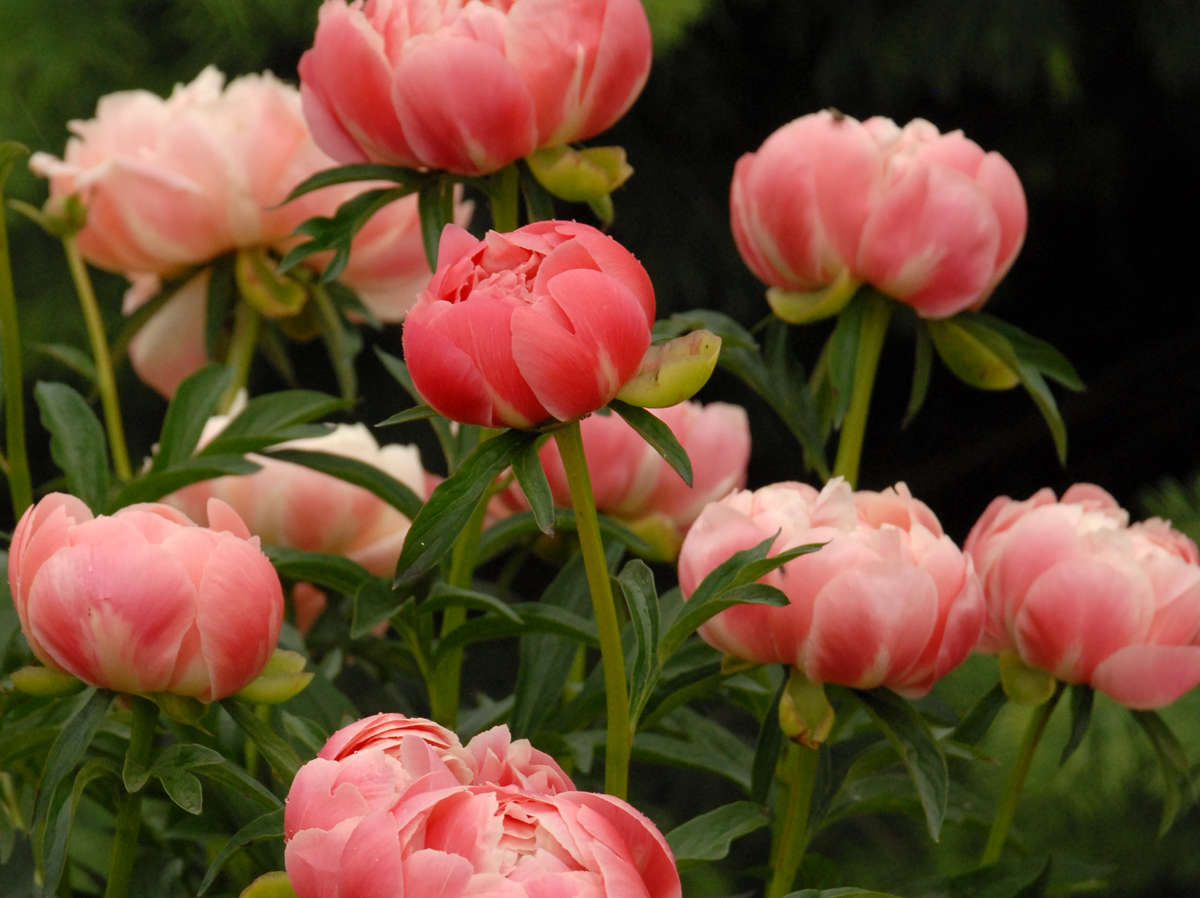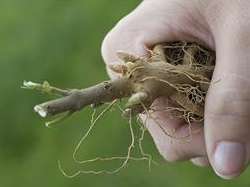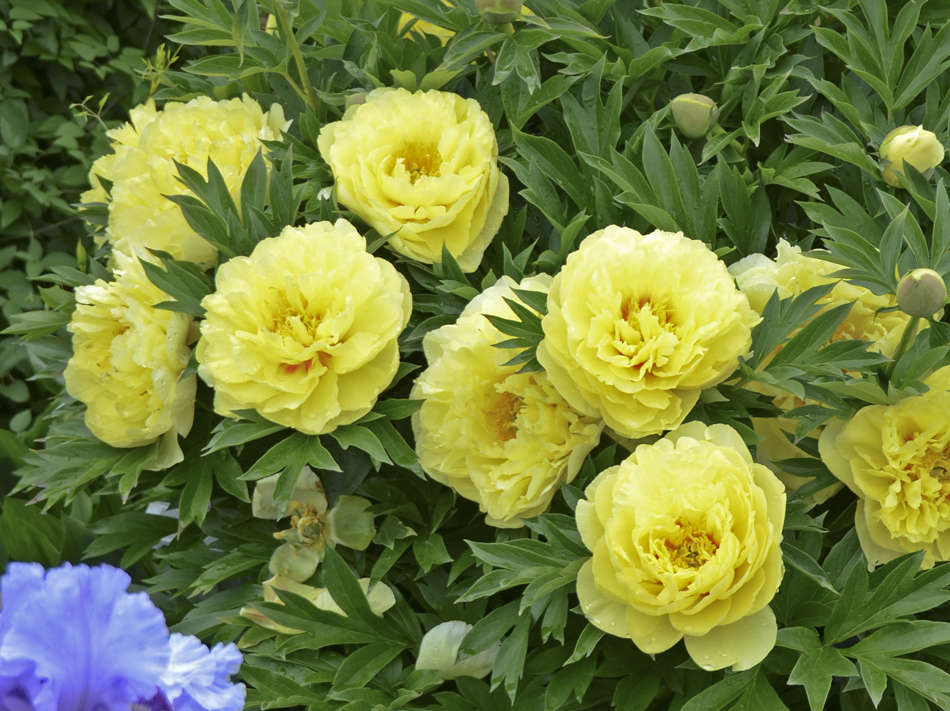Bare Root Perennials: Efficient for Growers of All Sizes
09/13/2013
by: Paul Pilon
Historically, bare root divisions were one of the main sources of starting materials for greenhouses and nurseries. With the popularity of plugs and liners in the past couple of decades, some growers have reduced their dependency on bare root divisions and switched to other types of starter plants. However, many growers have recognized that it continues to be more advantageous to utilize bare root liners for particular crops.
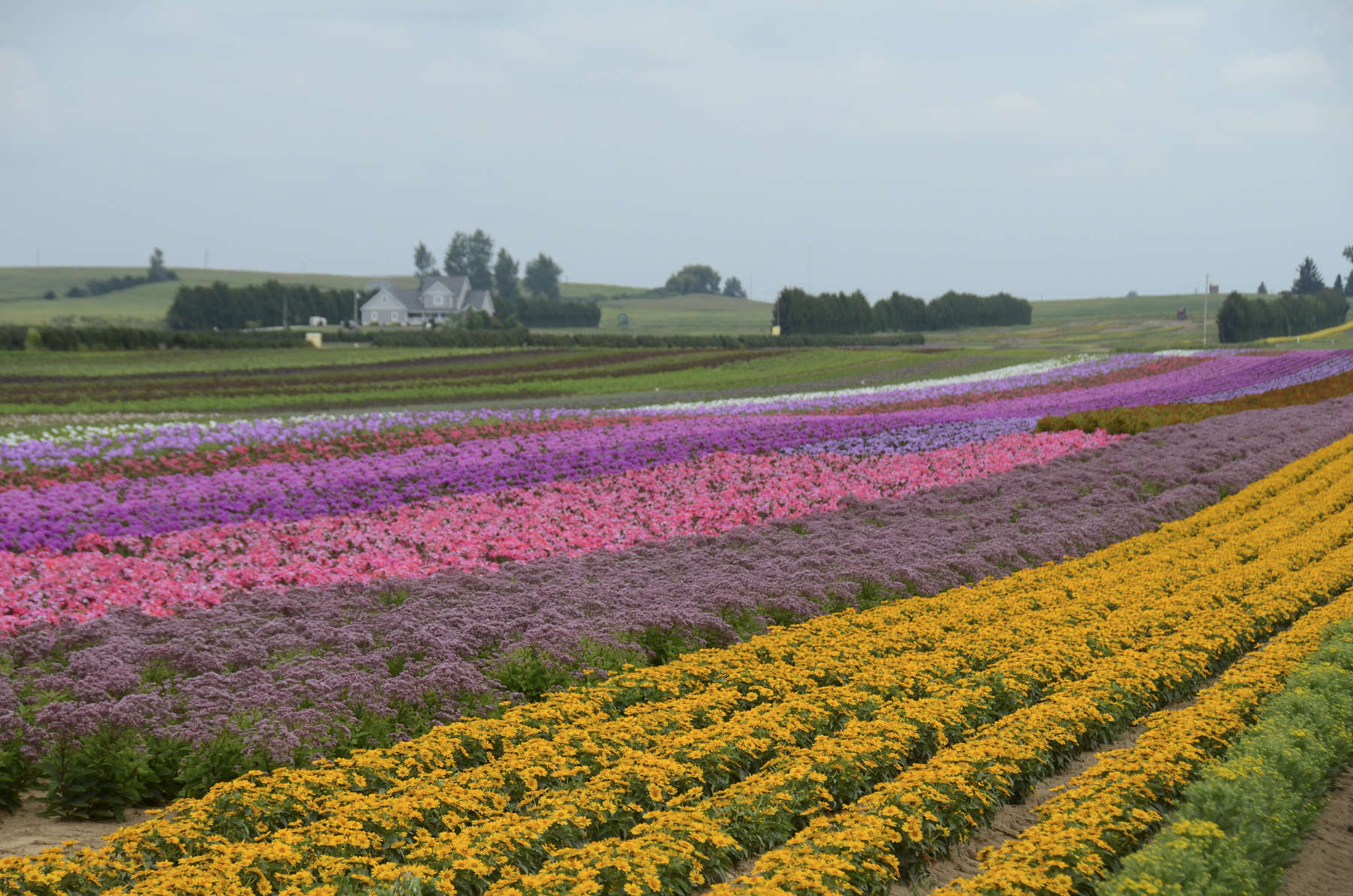
Some perennials are just better from bare root including the Phlox p. Flame™ series and Heliopsis ‘Tuscan Sun', shown here in field production at Walters Gardens, Inc.
Benefits for Small Growers

Some perennials are just better from bare root including the Phlox p. Flame™ series and Heliopsis ‘Tuscan Sun', shown here in field production at Walters Gardens, Inc.
Large growers typically purchase perennial liners in quantities of 72 or more individual plants per tray. This is often too many for small growers who may find themselves spending more money on liners and growing more finished plants than they need. A benefit for small growers in particular is that bare root starting materials are usually available in smaller minimum quantities.
Bare root perennials typically become available from wholesalers to ship in late summer and early fall. Logistically speaking, this is good timing for growers who can shift the transplanting of their perennial crops from spring to late summer or early fall when the workload is typically lighter and labor is more readily available. Once established, many fall planted perennials can be overwintered directly outdoors with the appropriate amount of winter protection. When the plants are kept outside and emerge in the spring, they are more tolerant of natural temperature fluctuations. Perennials grown outside with natural temperatures are often of higher quality than plants grown inside structures.
Benefits for Large Growers
Bare root perennials can usually be finished in less time than those started from plugs, with production times being an estimated 25 to 30% faster (up to 50% faster in some instances). This benefits large growers by giving them the ability to turn their production space faster, which could result in increased sales revenue over time.
Additionally, starting with bare root divisions gives growers more control over when their crops are in bloom. Large growers can stagger their potting dates to have plants in color over an extended sales window.
Efficiency for All Growers
Bare root perennials are commonly shipped from fall through early spring when it is not uncommon for temperatures to dip below freezing. Plug perennials are susceptible to cold injury during transit at this time of year if they are not dormant. However, bare root perennials are far less prone to injury during shipping which means less hassle and fewer claims for growers.
Bare root perennials typically are significantly larger than those grown in plug form. With their larger size, the plants have more vigor and quickly develop more shoots or branches than smaller sized plugs. Because they have better branching, it generally is not necessary to pinch perennials grown from bare root, resulting in labor savings and reduced overall production time.
Bare root perennials can often be grown considerably cooler than plants started from smaller sized plugs. As a general rule, the highest quality perennials are grown slow and cool. These cooler temperatures benefit both the plants and the growers paying the heating bills.
Where to Start
For growers who are new to or unsure about using bare root liners, start with easy perennials that are simple to grow. You’ll see tremendous results by starting with a bare root plant on some key genera listed at left. For example, it’s tough to fail with bare root Hemerocallis, Hibiscus, Sedum, and Lavandula. As a rule of thumb, look for the mark left by the soil line on the crown and pot the roots up to that line in the container.
Growers should seriously consider using bare root divisions to start many of the perennial items they are producing to obtain higher quality plants with improved value and marketability. Perennials started from bare root finish as larger plants with more eyes or branches per pot, often allowing growers to produce them in larger sized containers that sell at higher price points. High quality crops which can be produced with less labor, lower heat requirements, and faster production times benefit growers of all sizes.
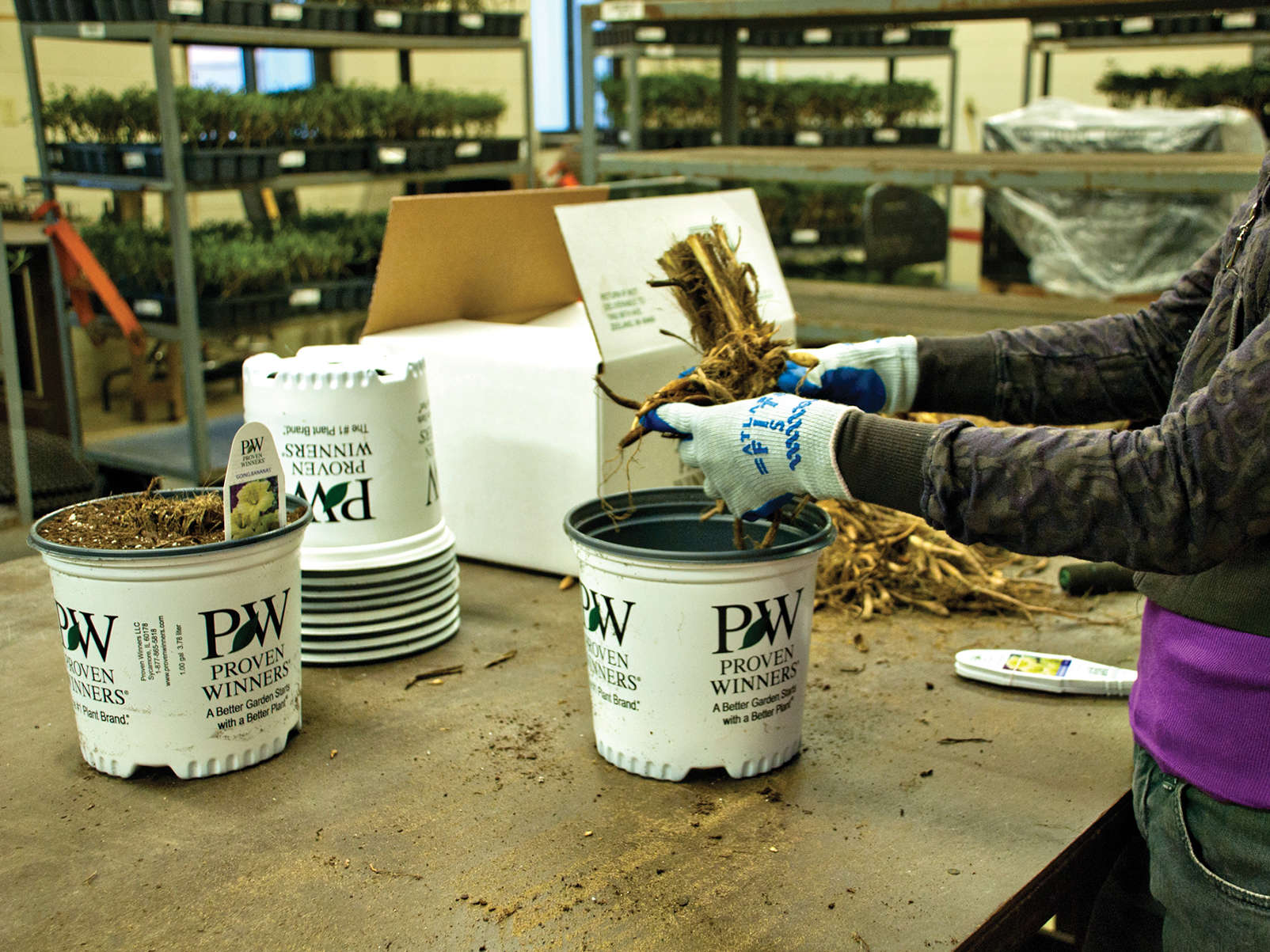
When potting up bare root perennials, fan out the roots in the pot to ensure best root-to-soil contact.
Transplanting Tips for Bare Root Perennials

When potting up bare root perennials, fan out the roots in the pot to ensure best root-to-soil contact.
Pot up your bare root perennials as soon as possible starting with evergreen varieties such as Iberis, Lavandula, and Phlox subulata. Next, pot up those with large, fibrous root systems such as Achillea before they dry out. Lastly, pot up varieties with larger, fleshy roots such as Hemerocallis.
As a general rule, bare root perennials should be planted with their crown at the soil surface. Look for the mark left by the soil line on the crown to use as a guide.
To encourage root development, fan or spread out the roots when they are transplanted. Do not fold or wad them up in a ball and shove them in the pot. Only trim the roots if absolutely necessary to fit in the container.
After transplanting, water the plants thoroughly to reduce undesirable air pockets and ensure good contact between the roots and the growing mix.
Paul Pilon is a horticultural consultant, owner of Perennial Solutions Consulting (www.perennialsolutions.com) and author of Perennial Solutions: A Grower’s Guide to Perennial Production. He can be reached at paul@perennialsolutions.com or (616) 366-8588.
